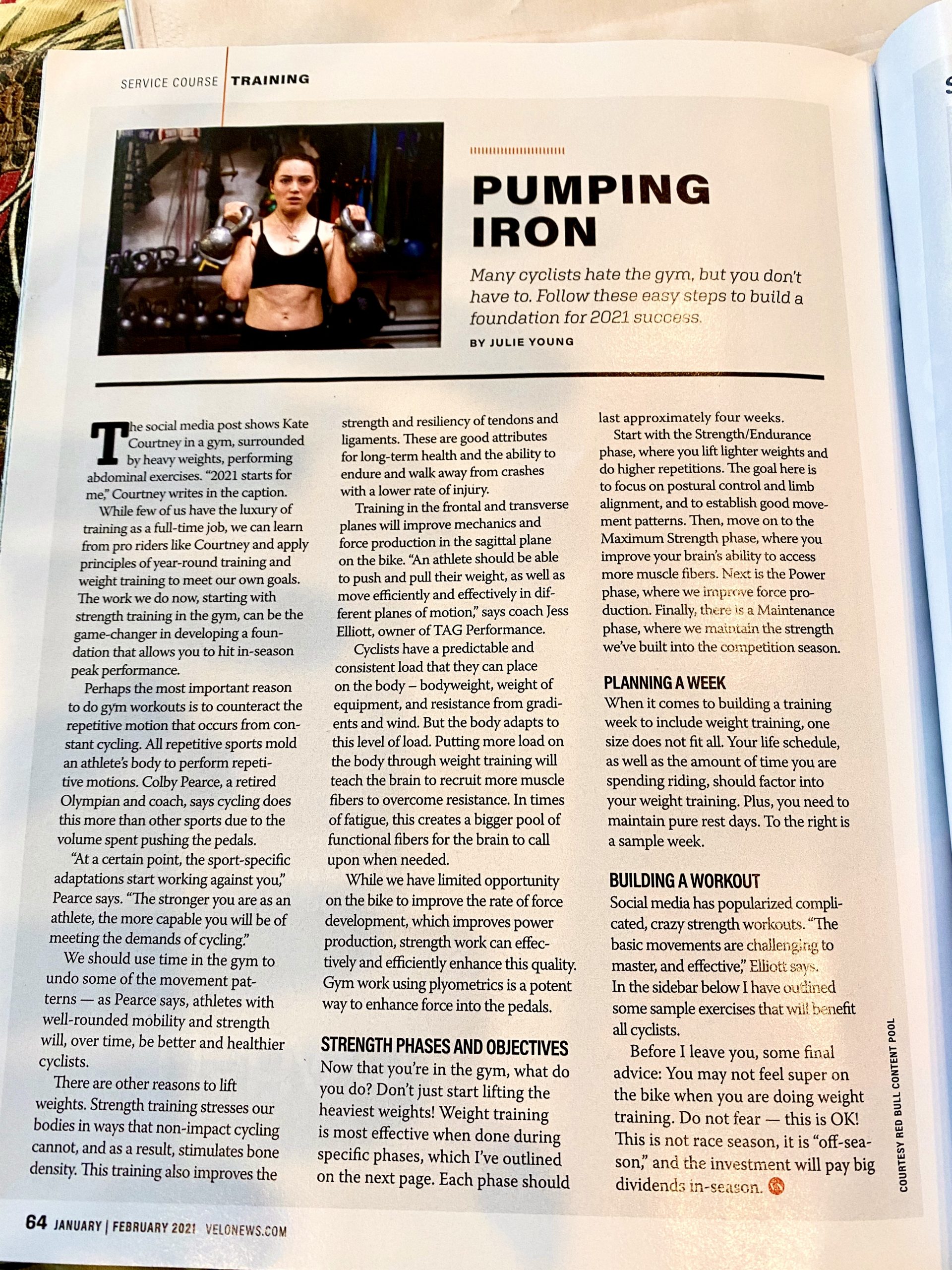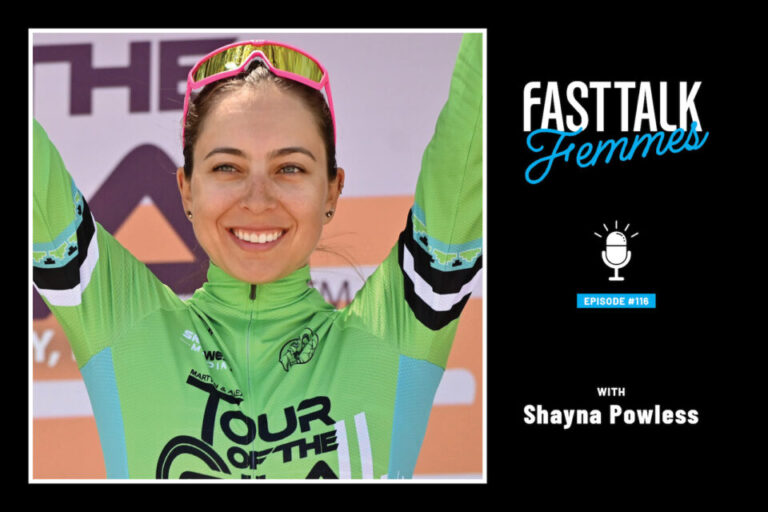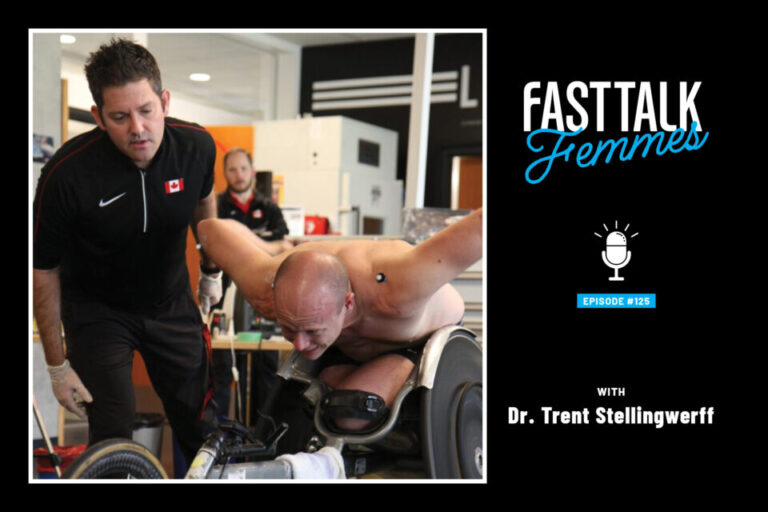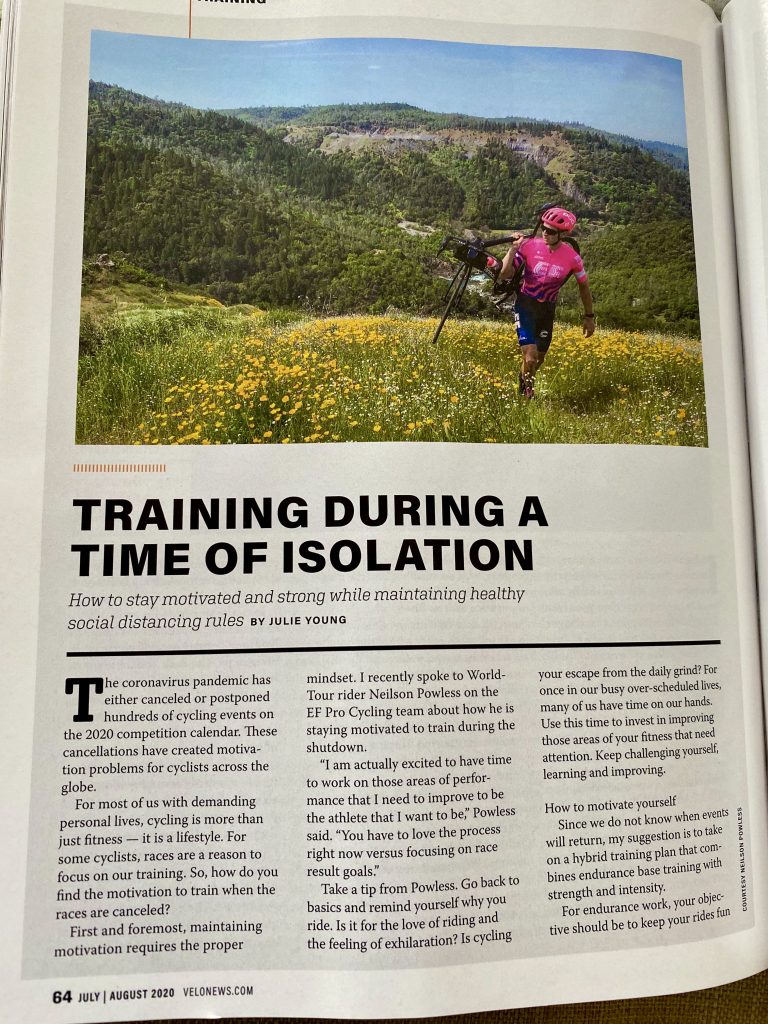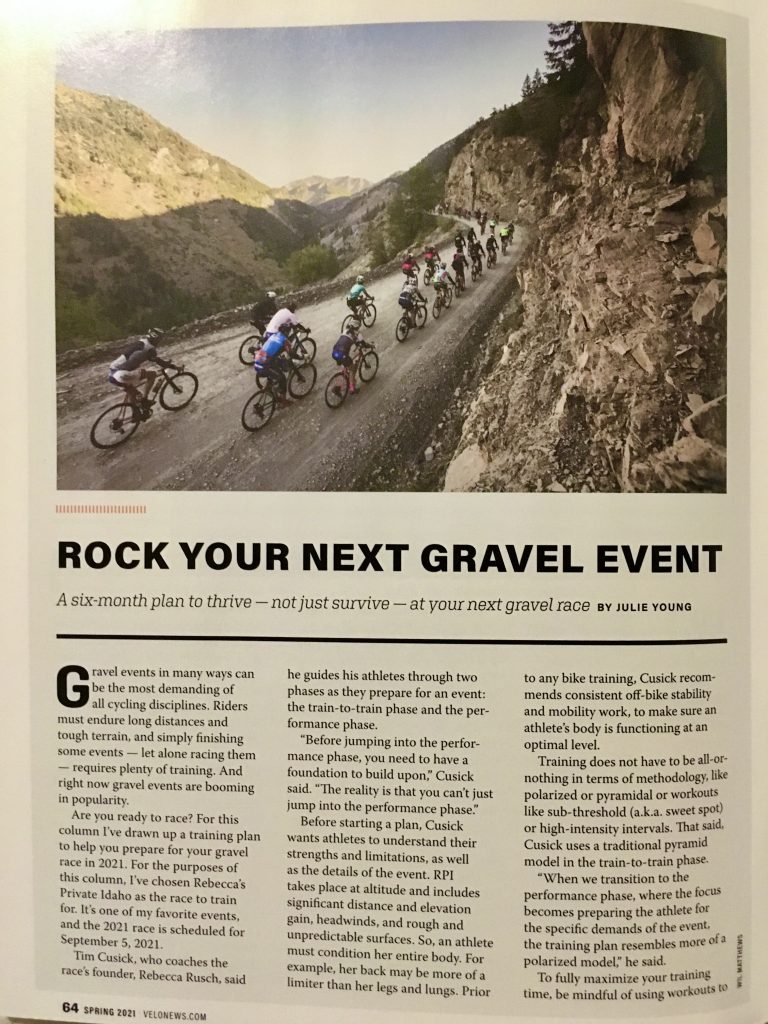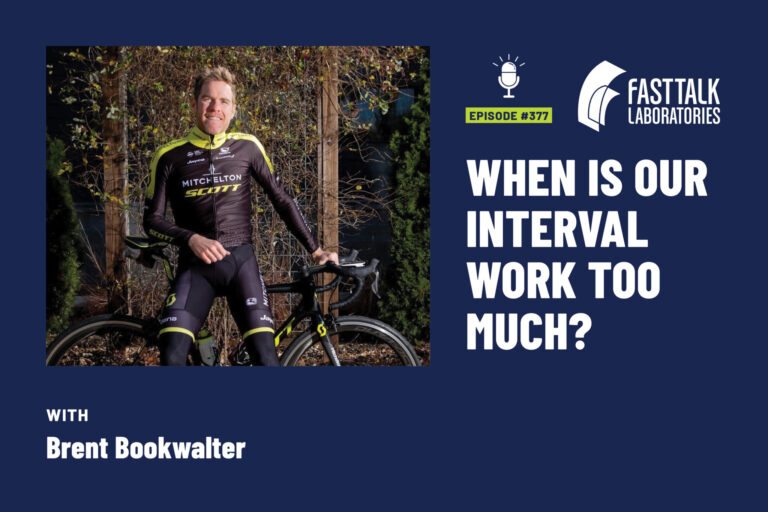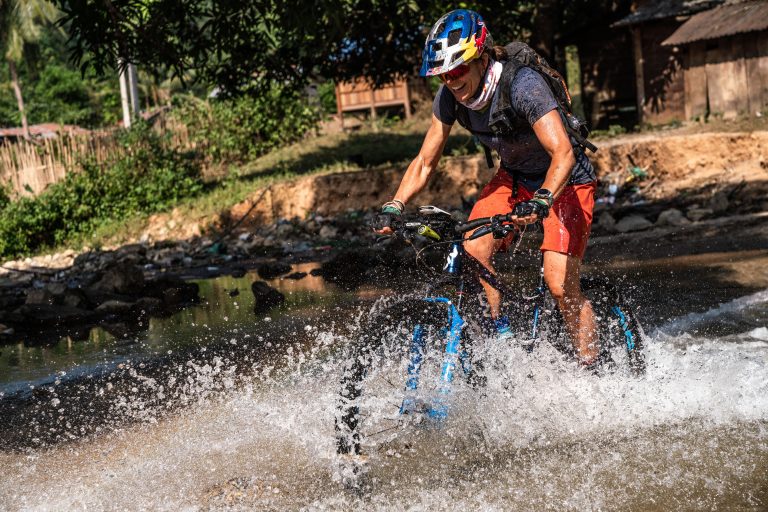Pumping Iron – Many cyclists hate the gym, but you don’t have to. Follow these easy steps to build a foundation for 2021 success – Velo News Jan/Feb 2020
A recent Tweet by Kate Courtney shows her working in the gym with the caption, “2021 starts today for me.”While we all can’t be pros where training is a full-time job year-round, you can learn from the pros and apply the principles of year-round training to meet your own cycling goals. Some people refer to this time of year as “off-season,” but the work done now, starting with strength conditioning, can be the game-changer in developing a foundation that allows you to hit in-season peak performance.
Myths of Strength Training
It seems many cyclists avoid strength training for fear of building bulk. But Jess Elliott, sports performance coach and owner of TAG Performance, says, “It is hard to achieve hypertrophy.” Jess focuses on developing a well-rounded, fit athlete. Hypertrophy may be a side effect, but gaining a pound of muscle and losing fat to improve power production seems like a worthwhile trade-off.” The science also shows that strength combined with endurance will blunt hypertrophy.
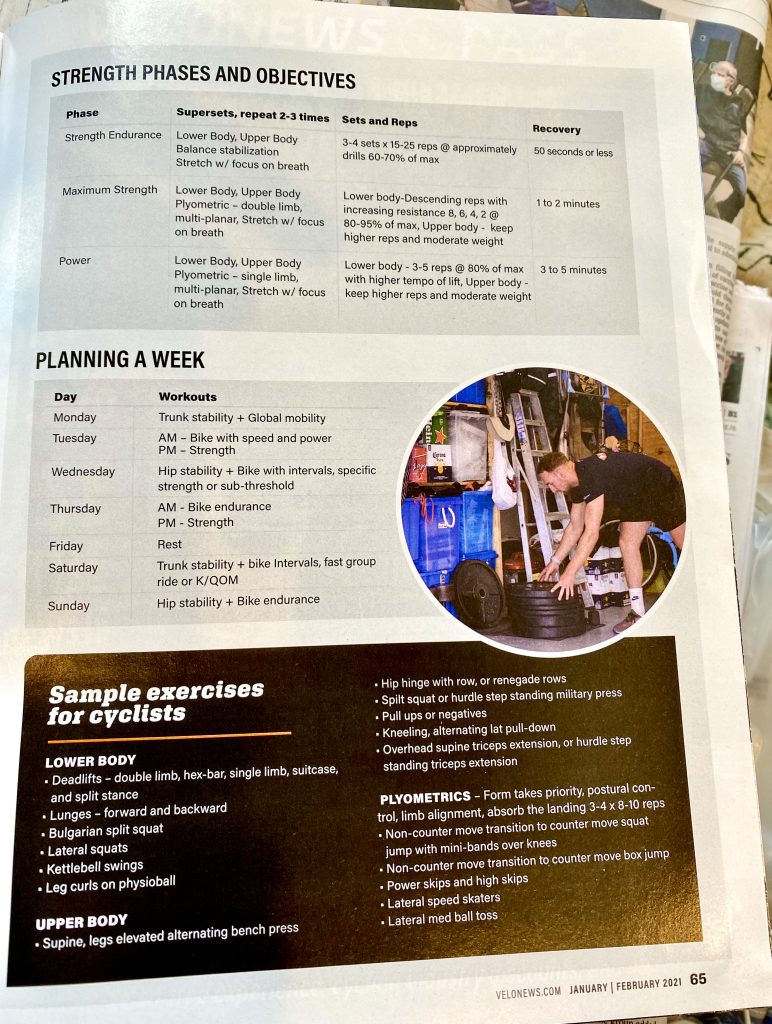
Why Strength Train?
Colby Pearce, the owner of Pearce Coaching and Fitting, says, “All repetitive sports create sport-specificadaptations and mold the athlete into movement patterns. Because of the volume performed in cycling, it does this more than other sports.” Use time in the gym to undo some of the movement patterns. Colby adds, “At a certain point, the sport-specific adaptations start working against you. The stronger you are as an athlete, the more capable you will be of meeting the demands of cycling.”
Strength training stresses our bodies in ways that non-impact cycling cannot, and as a result, stimulates bone density. This training also improves the strength and resiliency of tendons and ligaments. These are good attributes for long-term health and the ability to endure and walk away from crashes with a lower rate of injury.
Jess says, “An athlete should be able to push and pull their weight, as well as move efficiently and effectively in different planes of motion.” Training in the frontal and transverse planes will improve mechanics and force production in the sagittal plane on the bike.
Cyclists have a predictable and consistent load that they can place on the body – bodyweight, weight of equipment, and resistance from gradients and wind. But the body adapts to this level of load. Putting more load on the body through weight training will teach the brain to recruit more muscle fibers to overcome resistance. In times of fatigue, this creates a bigger pool of functional fibers for the brain to call upon when needed.
While we have limited opportunity on the bike to improve the rate of force development, which improves power production, strength work can effectively and efficiently enhance this quality. Gym work using plyometrics is a potent way to enhance force into the pedals.
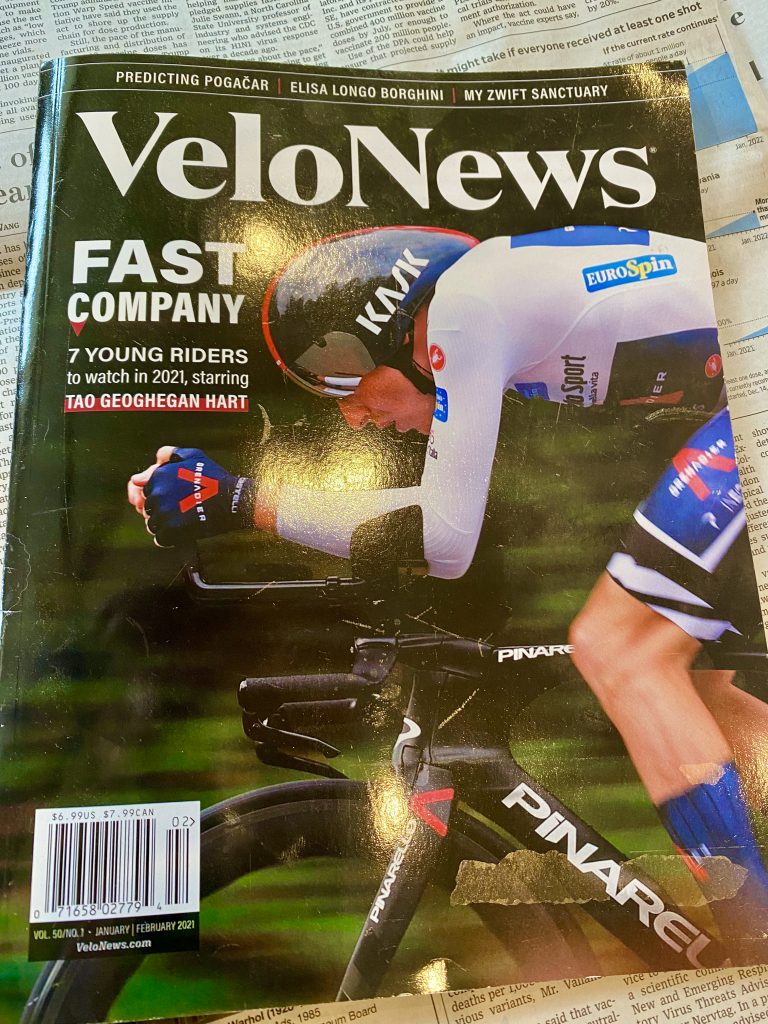
Planning a Training Week
As Jess says, when it comes to formatting a training week and effectively fitting all of the pieces in, one size does not fit all. It depends mainly on the individual’s life schedule. Colby emphasizes that we have to consider time under tension in both the gym and on the bike and still maintain pure rest days. Here is a sample week.
| Day | Workouts |
| Monday | Trunk stability + global mobility |
| Tuesday | AM – Bike with speed and power PM – strength |
| Wednesday | Hip stability + Bike with intervals, specific strength or sub-threshold |
| Thursday | AM – Bike Endurance PM – Strength |
| Friday | Rest |
| Saturday | Trunk stability + Bike Intervals, Fast Group Ride or K/QOM |
| Sunday | Hip stability + Bike Endurance |
Strength Phases and Objectives
Typically for those with less experience in the gym, a program starts with strength endurance. This phase, characterized by higher reps and lighter weights, focuses on training postural control and limb alignment and establishing good movement patterns. The maximum strength phase essentially improves the brain’s ability to access more muscle fibers. In the power phase, we work to improve force production. Each of these phases is approximately four weeks. Finally, the maintenance phase maintains and continues to build strength through the competitive season.
Building a Workout
Jess says, “Social media has popularized complicated, crazy movements, but the basic movements are challenging to master, and effective.” A great way to start is formatting exercises as supersets. They are efficient and effective.
| Phase | Supersets, repeat 2-3 times | Sets and Reps | Recovery |
| Strength Endurance | Lower Body Upper BodyBalance stabilization drillsStretch w/ focus on breath | 3-4 sets x 15-25 reps @ approximately 60-70% of max
| 50 seconds or less |
| Maximum Strength | Lower Body Upper BodyPlyometric – double limb, multi-planarStretch w/ focus on breath | Lower body- Descending reps with increasing resistance 8, 6, 4, 2 @ 80-95% of maxUpper body – keep higher reps and moderate weight | 1 to 2 minutes |
| Power | Lower Body Upper BodyPlyometric – single limb, multi-planarStretch w/ focus on breath | Lower body – 3-5 reps @ 80% of max with higher tempo of lift Upper body –keep higher reps and moderate weight | 3 to 5 minutes |
| Maintenance | Combination of max strength, power, plyometrics, minimum one workout/week, shorter, more concise workouts | ||
It is essential to understand that you may not feel super on the bike when lifting, but that is ok. This is not race season, it is “off-season,” and the investment will pay big dividends in-season.
General Guidelines
- Progress from simple to complex
- Base of support – transition from wide to narrow
- Increase the number of joints involved
- Move from stable to unstable surfaces
- Transition from slow to fast movements
- Mastery of movement takes priority to advance the complexity of the movement
Sample Exercises for Cyclists
- Lower body
- Deadlifts – double limb, hex-bar, single limb, suitcase, and split stance
- Lunges – forward and backward
- Bulgarian split squat
- Lateral squats
- Kettlebell swings
- Leg curls on physioball
- Upper body
- Supine, legs elevated alternating bench press
- Hip hinge with row, or renegade rows
- Spilt squat or hurdle step standing military press
- Pull ups or negatives
- Kneeling, alternating lat pull-down
- Overhead supine triceps extension, or hurdle step standing triceps extension
- Plyometrics – Form takes priority, postural control, limb alignment, absorb the landing 3-4 x 8-10 reps
- Non-counter move transition to counter move squat jump with mini-bands over knees
- Non- counter move transition to counter move box jump
- Power skips and high skips
- Lateral speed skaters
- Lateral med ball toss

